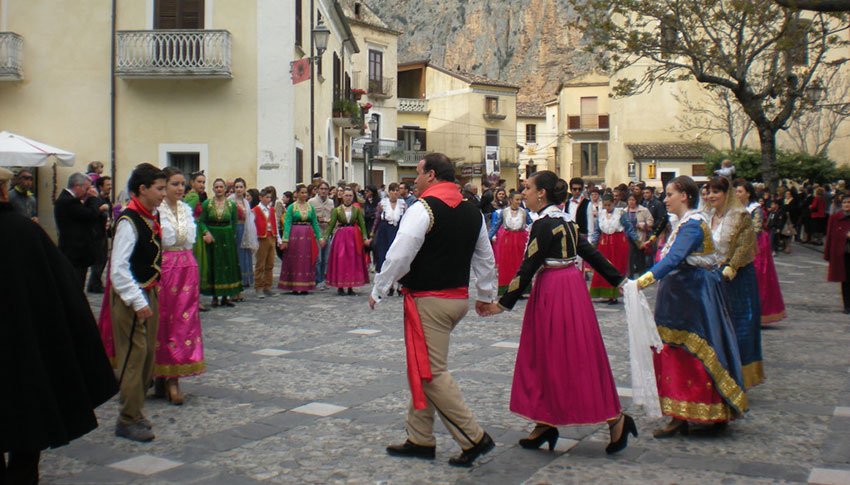The Easter rites conclude on Tuesday with celebrations linked to the re-enactment of the heroic deeds of George Castriota Skanderbeg, the Vallje,where the sense of ethnicity becomes more and more alive, here it is as if one breathes a different air, as if the wind carries scents of distant festivals, not only in space, but also in time, traditions come alive again. The costumes in ancient colours and precious fabrics, worn by young brides and beautiful women before us, seem to come alive with new life on today's maidens. This magical atmosphere characterises the vallja, an ancient, sweet, tragic and poignant ballad reminiscent of the hero Skanderbeg who led his people to the land of Calabria. A ballad handed down from generation to generation, from song to song, which today has become a captivating and enveloping phonetic charm sung and danced to the rhythm of instruments such as accordion and accordion. According to tradition, this festival is the commemoration of a very important historical event in the history of the Arbëreshë, the victory of George Castriota Skanderbeg, who, leading a small army, defeated the Turkish armies led by the renegade Balabano, saving the citadel of Kruja on 24 April 1467.
The civitan historian Serafino Basta in 'Il Regno delle Due Sicilie descritto e illustrato di Lorenzo Giustiniani' (The Kingdom of the Two Sicilies described and illustrated by Lorenzo Giustiniani) about the vallje in 1855 wrote:'After lunch on Sundays, Mondays, and Tuesdays, it is the custom to gather various companies of young men, who, dressed in oriental fashion, with turbans on their heads, with swords raised high and with flags, go singing the warlike events and victories of the hero of Croia'.The women in the laughs still sing national songs and add to the delight of the onlookers from neighbouring countries who flock to enjoy themselves. It is a tradition to have established these festivals in order to have in the course of the years, a memory of our native country, which imperious circumstances forced us to abandon, we regret not being able to bring back those songs that voracious time has reduced to disconnected fractions and we are sad to see the native customs fall into disuse.
According to the story, the movements performed by the vallja during the dance represent the encirclement technique used by Skanderbeg against the Turkish army. It is no coincidence that the vallja, as it moves, imprisons the strangers in its coils, representing the Turks who are freed after paying the symbolic ransom, which in this case consists of liquor and sweets. The Arbëreshe population thus remains ideally connected to its epic past and with this particular manifestation, tends to weld the ethnic principles to keep the community united.


